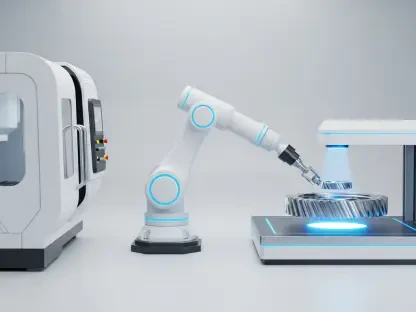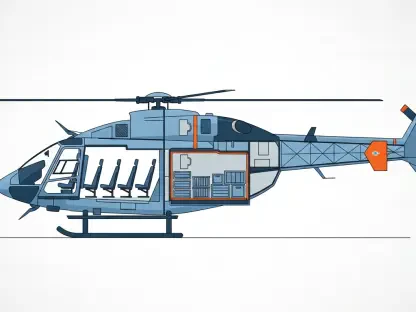The COVID-19 pandemic brought numerous industries to a standstill, with the aviation sector taking a significant hit. Airlines faced logistical nightmares as the number of grounded planes surged. In response, Scandinavian Airlines (SAS) found an ingenious solution to manage aircraft maintenance during this challenging period. Leveraging 3D printing technology, SAS managed to keep their aircraft protected and maintained, overcoming significant supply chain disruptions and operational challenges.
The Pandemic’s Impact on the Aviation Industry
The onset of the COVID-19 pandemic caused unprecedented disruptions worldwide. In the aviation industry, a staggering 62% of passenger planes were grounded. Airlines like SAS faced an immediate challenge: maintaining these idle aircraft. Grounded planes are exposed to harsh weather conditions, which can lead to long-term damage if not properly maintained. The necessity to shield these parked aircraft from environmental elements became pressing, as exposure to debris, rain, snow, and potential animal interferences posed serious risks.
Adding to the complexity, each parked aircraft required regular checks and protective measures to shield it from environmental elements, debris, and potential animal interferences. This involved a labor-intensive process, ensuring that engines were adequately protected to prevent deterioration. Traditional engine covers and maintenance equipment became increasingly scarce due to disrupted supply chains. This scenario forced airlines to scramble for alternative solutions, stretching their resources thin.
Supply Chain Disruptions and Maintenance Challenges
The pandemic significantly affected global supply chains, causing shortages in raw materials and manufactured goods. This scarcity was particularly noticeable in the aviation sector, where standard engine covers and other maintenance materials became hard to source. Dependence on these supplies made the situation even more strained, as airlines were forced to find temporary fixes. SAS, like many other airlines, initially resorted to makeshift solutions such as plastic wraps and tapes to protect the engines.
Initially, quick fixes such as plastic wraps and tapes were employed to protect the engines, but these measures proved unsustainable for the extended storage periods necessitated by the pandemic. Weekly operational checks of aircraft engines became labor-intensive and inefficient, underscoring the need for a long-term solution. The situation was exacerbated by the logistical difficulties in transporting even the most basic maintenance materials, as global supply chains continued to experience interruptions.
Leveraging 3D Printing Technology
Faced with this daunting scenario, SAS turned to innovation to manage their fleet’s maintenance. Collaborating with CNE Engineering, they explored the potential of 3D printing technology—a flexible and rapidly advancing field. Nathan Brown from CNE Engineering took the lead, analyzing material requirements and identifying castable urethane for its durability and cost-effectiveness. This innovative approach promised to address the shortage of traditional maintenance materials while providing a sustainable, efficient solution for aircraft protection.
The use of 3D printing to create custom-engine covers was a game-changer. The process began with designing molds suitable for producing these covers, followed by utilizing BigRep’s large-format 3D printers to bring the designs to life. The choice of material and the precise 3D printing capabilities ensured that SAS could produce the required parts swiftly and reliably. This tailored solution answered an urgent need, providing SAS with a feasible alternative to the pre-pandemic maintenance routines.
Streamlined Process and Implementation
The transition to 3D printed engine covers revolutionized the maintenance process. The intricate design and engineering of the molds, combined with advanced 3D printing technology, allowed SAS to produce these critical parts in a matter of weeks. This quick turnaround was vital in reducing downtime and ensuring that the grounded planes were adequately protected. The implementation phase saw the rapid completion of complex molds and the casting of urethane parts, ready in a fraction of the time traditional manufacturing would require.
Moreover, the new method drastically cut down the maintenance time. Instead of spending hours on weekly engine checks, technicians could now perform these tasks in a matter of minutes. This efficiency not only alleviated the workload but also contributed to significant cost savings in terms of labor and resources. The streamlined process ensured that SAS could maintain operational readiness with minimal disruption, providing a template for other airlines to follow.
Benefits and Future Prospects of 3D Printing
The project’s success did not merely address an immediate need but also highlighted the broader potential of 3D printing in the aviation industry. The flexibility in design and production, reduced lead times, cost-effectiveness, and minimal wastage are compelling advantages that large-scale 3D printing offers. The ability to rapidly produce custom, intricate parts tailored to specific requirements demonstrated the adaptability of this technology.
Nathan Brown emphasized that the benefits extended beyond current applications. The technology paves the way for producing other ground service equipment and critical parts, such as tool holders, jigs, templates, and carts. The ability to quickly adapt and produce custom components on-demand can significantly streamline operations in various fields. The scalability of 3D printing offers a remarkable advantage, particularly in industries that face high risks and stringent operational demands.
Embracing Innovation Amidst Crisis
The COVID-19 pandemic caused a massive disruption across various industries, but the aviation sector was one of the hardest hit. Airlines around the world grappled with numerous challenges as a spike in grounded planes led to logistical chaos. In the midst of this upheaval, Scandinavian Airlines (SAS) devised an innovative solution to address the hurdles of aircraft maintenance. By embracing 3D printing technology, SAS found a way to keep their fleet protected and operational, even as they navigated through severe supply chain disruptions and operational challenges.
3D printing allowed SAS to produce necessary components and parts on-demand, reducing dependency on delayed or unavailable supply lines. This technology proved invaluable for creating custom tools and parts that were otherwise difficult to procure. Not only did it ensure that maintenance schedules were adhered to, but it also minimized downtime, preventing further financial losses. The flexible nature of 3D printing enabled SAS to remain agile during an unprecedented crisis, showcasing the critical role of innovation in overcoming industry-wide obstacles. By integrating this advanced technology, SAS maintained their operational standards, demonstrating resilience and adaptability in the face of global adversity.









